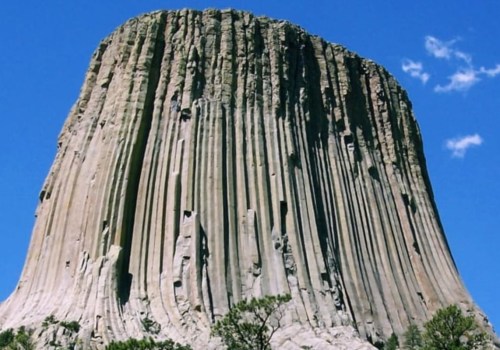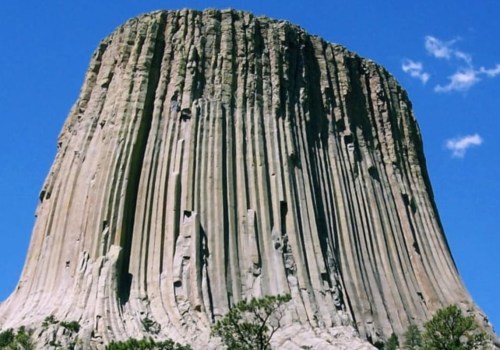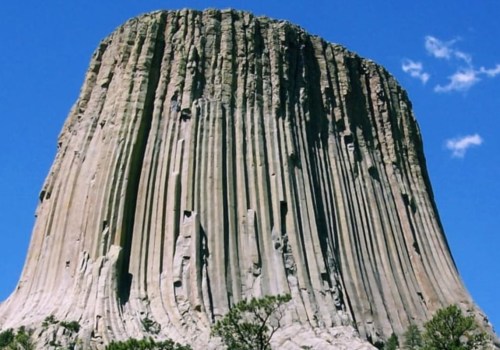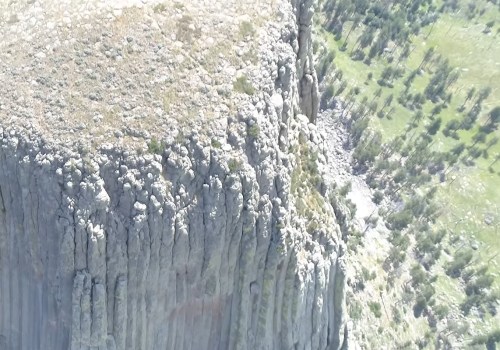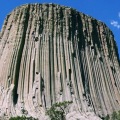Devils Tower is a rare igneous rock formation located in northeastern Wyoming, and is the greatest example of columnar union in the world. It has long been a prominent landmark, but its origin remains a mystery. Geologists agree that the Devil's Tower was formed from molten rock forced upwards from deep in the earth, but debate continues as to whether the rock cooled underground or if the magma from the Devil's Tower reached the surface. Current research supports the conclusion that the Devil's Tower was not a volcano, but rather an igneous intrusion injected between layers of sedimentary rocks and cooled underground.
The characteristic furrowed columns are the result of contraction during cooling of the magma. Geological estimates place the age of the Devil's Tower at more than 50 million years, although erosion likely exposed it only one to two million years ago. The survival of Devils Tower is especially remarkable due to its vertical faces, which are more erosive and affected by gravity with landslides and rockfalls. It was the first national monument in the United States, established on September 24, 1906 by President Theodore Roosevelt.
The circular shape and vertical columns of Devils Tower have led most geologists to believe that it is a conduit or “gorge” that was once beneath a volcano. Another theory suggests that it is a remnant of a windowsill, which is lava dripped and solidified between two layers of sedimentary rocks. Scott Momaday (Kiowa) was given the name Tsoai-talee (rock tree boy) after Pohd-lohk, an elderly Kiowa, linking him to the myth of the Devils Tower bear. A sign at the visitor center indicates that the sedimentary rock was 2.4 km thick and eroded more than 50 Ma, meaning that it was six times higher than Devils Tower.
As rain and snow continue to erode the sedimentary rocks surrounding its base, more of Devils Tower will be exposed. Erosion of a reserve or laccolith is unlikely to produce a circular feature such as Devils Tower, and erosion of a windowsill would not result in such a circular tower either. In addition, the amount of talus around Devils Tower is modest8, which reinforces the deduction that erosion was rapid and recent. O'Harra (from the South Dakota School of Mines) theorized that Devils Tower should be an eroded remnant of a laccolite.
